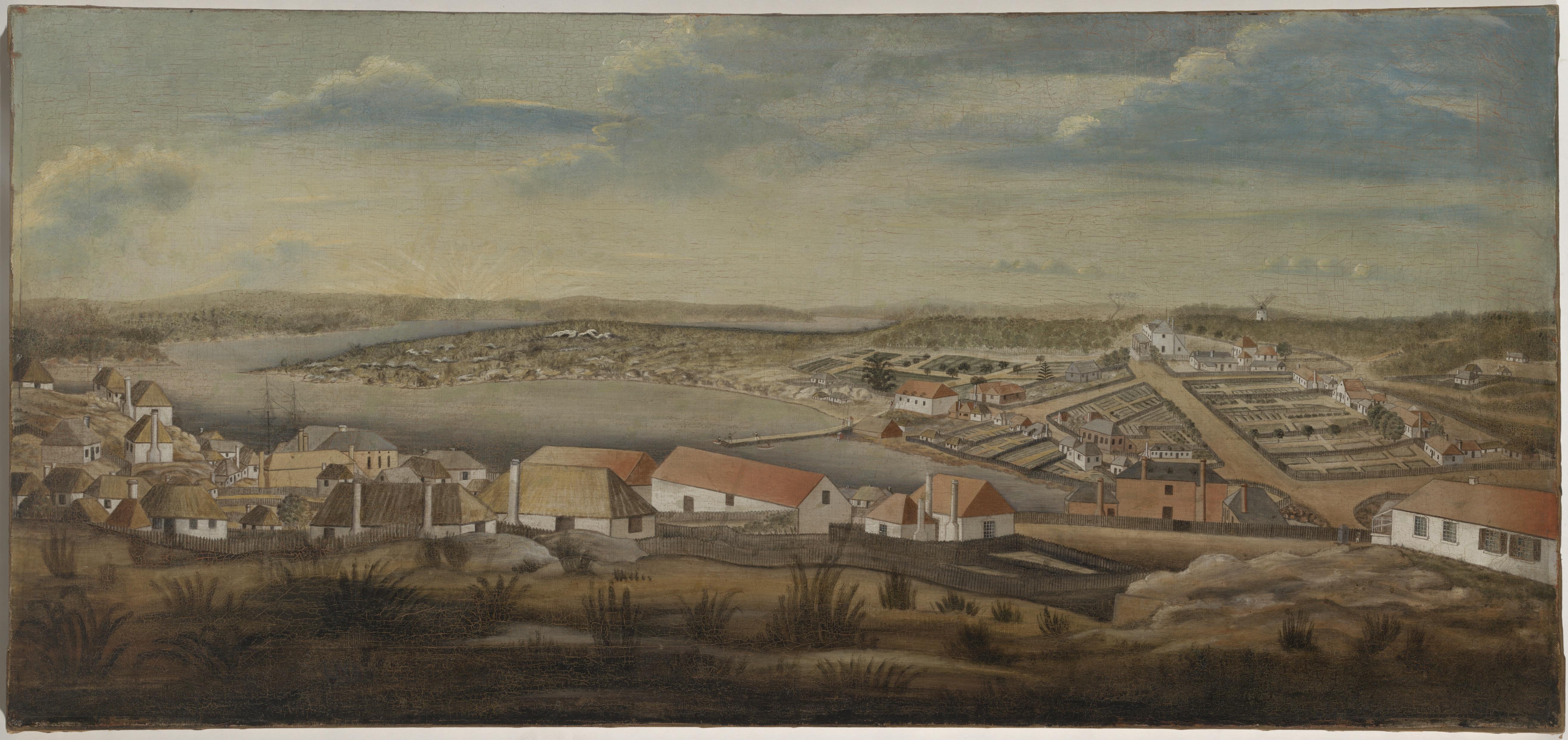In 1801 missionary John Youl wrote to London to report of Sydney that ‘no other spot on the face of the habitable globe contains more witnesses of the awful depravity of human nature. Sin, like a mighty torrent, overspreads the land.’ Early images of Sydney were very much aimed at challenging this powerful and persistent message. As Judge Advocate David Collins noted in 1798, ‘From the disposition to crimes and the incorrigible characters of the major part of the colonists … the word “Botany Bay” became a term of reproach that was indiscriminately cast on every one who resided in New South Wales’.
But others were less cynical — gardener Peter Good noted in 1802 that Sydney ‘has a fine appearance. It is seated at the end of a Snug Cove ... each house has a considerable space of Garden ground so that the Town spreads over a great space … there is a degree of neatness & regularity.’
Sydney — Capital New South Wales was painted around 1800, most likely in England from drawings made locally. Standing on the west side of Sydney Cove, looking towards the Heads, the neat and orderly town, lit by an optimistic sunrise, demonstrates the success of the colony — its solid buildings and carefully laid out gardens refute the idea that it was a cesspit of depravity.
On the right of the painting, on what is now Bridge Street, are the homes and offices of Government administrators, which terminates with the two-storied Government House (now the site of the Museum of Sydney). By 1800 it was clear that the colony was not going to fail despite the early famines. This painting is both an explicit statement of its success and an implicit record of the dispossession of Aboriginal people, who though in reality a very visible presence in Sydney at the time, are entirely absent from this painting.
Richard Neville
Mitchell Librarian and Director, Education & Scholarship,
State Library of NSW
Sponsors
Works in Focus
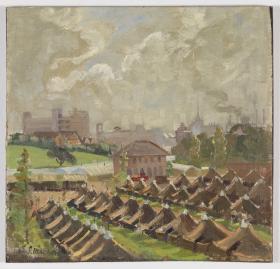
- Art and culture
Americans on campus: part of the Works in Focus series
Sydney Teacher’s College was co-located on the grounds of Sydney University where American Military Police units were billeted, describing the impact of the Americans on campus. Part of the Works in Focus series.
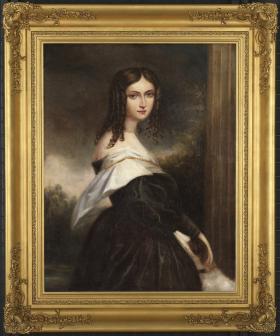
- Art and culture
After life: Maurice Felton’s portrait of 21-year-old Sophia
Looking at the portrait of this young woman, so full of life, you would never think it was painted after her death. But we know the sitter, posed so serenely in this picture, had died six months before it was exhibited at the artist’s Sydney studio. Part of the Works in Focus series.
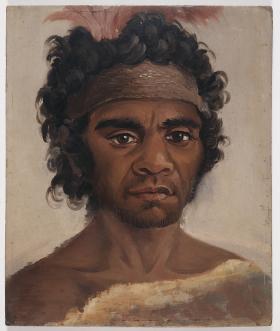
- History
An unknown warrior: mysterious portrait of an unknown, handsome young Aboriginal man
This mysterious portrait of an unknown, handsome young Aboriginal man is believed to have belonged to Governor Lachlan Macquarie, described as ‘One of the NSW Aborigines befriended by Governor Macquarie’. Part of the Works in Focus series.
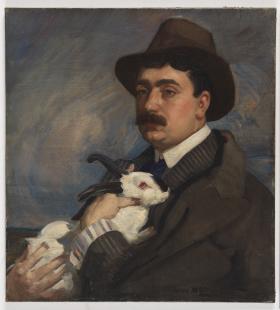
- Art and culture
A hint of eccentricity: a beautifully rendered, somewhat playful portrait
One of Australia’s most influential artists, George Washington Lambert (1873–1930), as part of the Works in Focus series.

